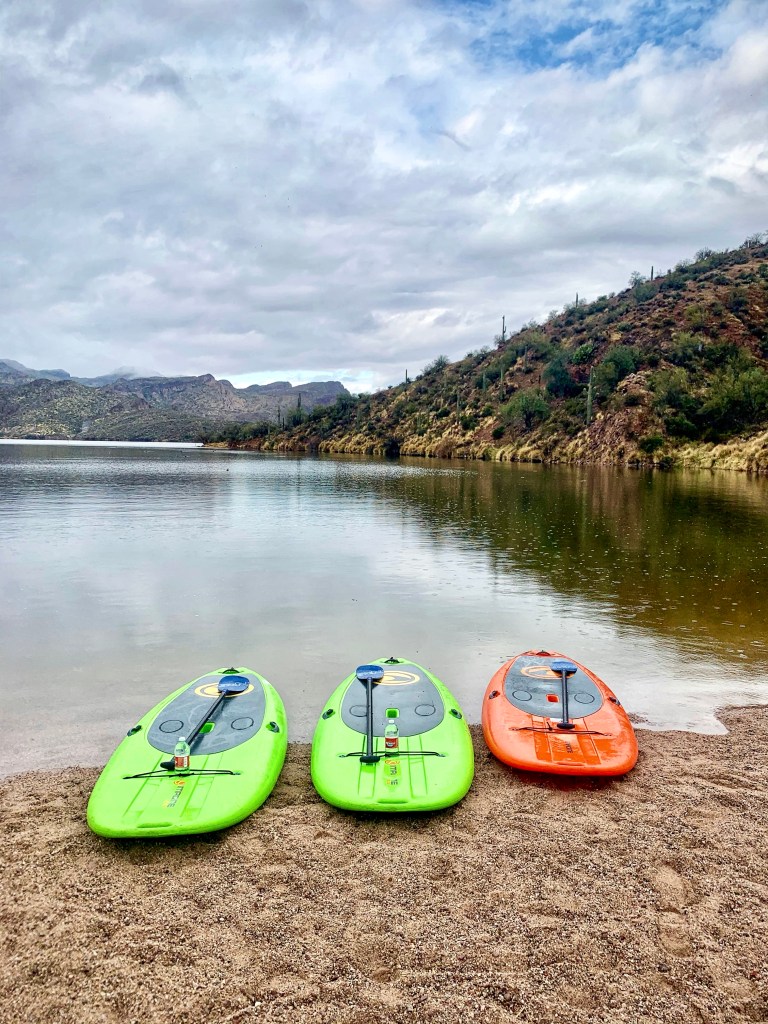
Travel has the power to surprise us in a number of ways. It can change the way we view ourselves. Even destinations themselves can reframe the way we see them. A perfect example of this happened during a long weekend in spring 2021, on a reporting trip to Scottsdale, Arizona and the surrounding Sonoran Desert.
Besides having the opportunity to stand up paddle board with one of my best friends on Saguaro Lake with REI (yes, lakes, rivers, and dams, in the desert!), and touring Frank Lloyd Wright’s meticulously and intuitively crafted Taliesin West, the region’s emerging wine scene intrigued me the most. See, while most people assume the area is all hot, dry, and void of life, certain parts actually offer an ideal wine-growing climate.
According to one Napa Valley Register article, in 1984 Arizona was the first state to establish a U.S. government-designated wine growing region, which is referred to as an American Viticulture Area (or AVA.) As of 2022, there are more than 100 wineries throughout the state.
While I was in town, the one question that came to mind as I tasted the local vino on offer at Carlson Creek Vineyards and Merkin Vineyards’ tasting rooms in Downtown Scottsdale was, ‘Why isn’t Arizona wine more well known than it should be?’ I posed this question to Sam, Carlson Creek’s tasting room manager, whose answers were multi-fold.

Arizona’s Growing Pains as an Emerging Wine Region
For one, Arizona’s commercial winemaking history is still in its infancy compared to more established and more well-known American wine regions like California or Oregon. According to Arizona Wine Growers Association, the state’s first commercial winery opened in the 1880s. Then prohibition went into effect in 1920 (the law passed in 1919.) Local wine making gained traction again in the late 1970s.
By comparison, by this time California’s wine industry had already gained international acclaim at the Judgment of Paris in 1976, a blind tasting event wherein French wine experts selected California-produced wines in both red and white categories—in context, this was a time when French wines were virtually the only It wines around.
According to Sam at Carlson Creek, take Arizona’s fledgling industry and pair it with the current small production volume and get a combination that makes it difficult for Arizona wine to show up more frequently and widely on restaurant menus and store shelves. There are a few exceptions, such as FnB restaurant which does exceptional things with vegetables and lists a number of locally-produced wines. (And whatever you do, do not miss out on FnB’s butterscotch pudding for dessert.)
The other layer here is a perception issue. The perception that nothing grows in the desert. That other wine growing regions are superior. Whatever it is, I’m looking forward to learning more about Arizona wine country, especially now that I’m armed with a little more wine knowledge after going through WSET’s Level 2 certification program.
Connect with The Curious Passport
- Keep up with my real-time travels and eats from San Diego and beyond on Instagram
- Join me on Facebook
- Support my immersive, sensorial travel and food journalism: send me a coffee!
